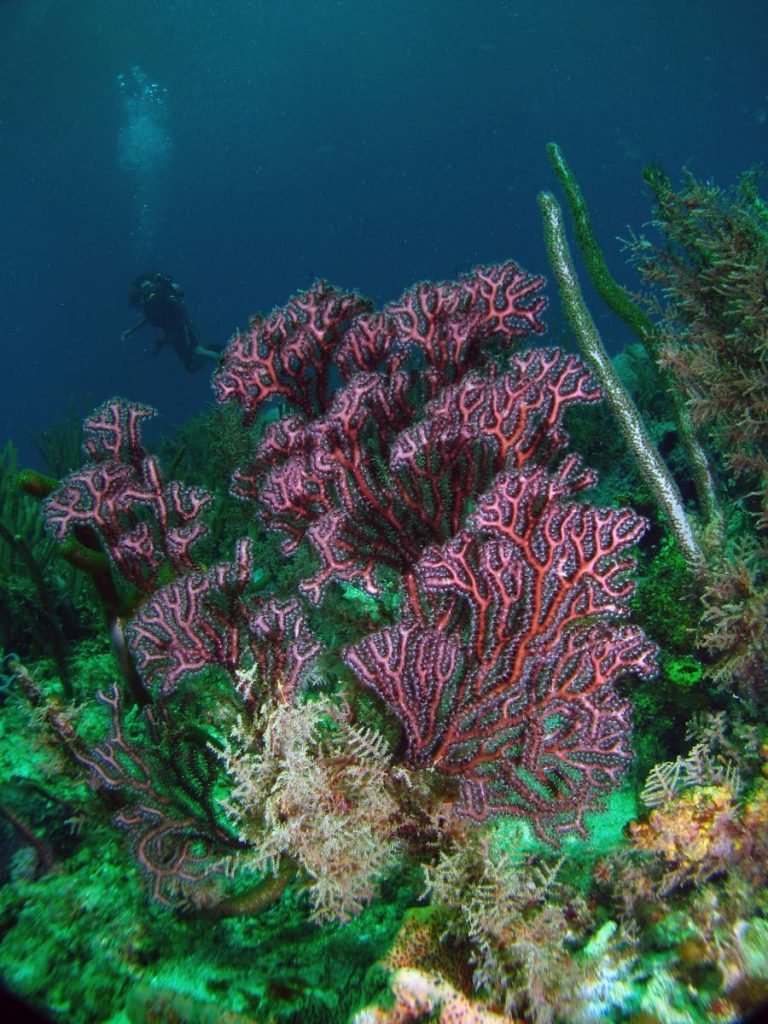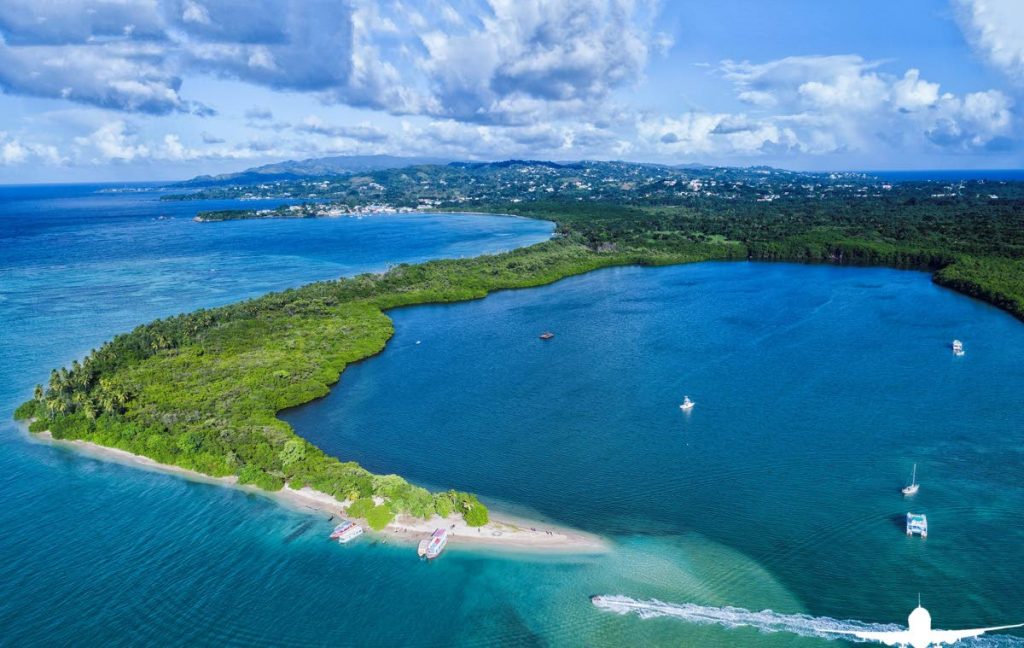Managing Buccoo Marine Park

The Buccoo Reef Marine Park was reopened on Monday with new regulations. Dr Anjani Ganase talks with policy advisor to the Chief Secretary and marine scientist Shivonne Peters about the rules and its enforcement in a renewed attempt to manage human activities and their effects on the life and sustainability of the Buccoo ecosystem and its creatures.
The covid19 pandemic taught us that caring for ourselves – our lives, our economy and our future – goes hand in hand with caring for nature. We also learned that if we leave nature alone, it has the potential to heal itself. As humans were kept away from all public and natural spaces, as industries were working on minimal capacity, as our consumption of plastic, food wastage lowered, and the use of cars was reduced, our environments (land and sea) became cleaner, quieter and more inhabitable by creatures. Even in TT, as humans stayed away, our beaches, waterways and marine environments breathed a sigh of relief.
Kudos to the Tobago House of Assembly (THA) who allowed the unfortunate circumstances to work to the benefit of the marine environment, specifically the Buccoo Reef Marine Park. The Division of Food Production, Forestry and Fisheries used the opportunity to institute new regulations that will govern the re-opening of the park.

The Buccoo Reef Marine Park is the only natural marine seascape in Trinidad and Tobago with an interconnected ecosystem of a coral reef, seagrass bed and mangrove habitat. Since the 1970s, Buccoo Reef area has been protected, as our nation’s unique seascape environment for marine biodiversity and an important nursery fish and invertebrates. Yet, over these 50 years, we have used the park more as a commercial enterprise than a precious resource. The marine park has to date not been effectively been managed. During this time, there has been significant (over 60 per cent) coral loss in some areas, while in other areas, almost all the branching corals have been trampled by tourists or infected by disease. Most of the coral was lost in the 1970-1990s, with limited recovery to date. As corals are habitat providers; this means that many fish and critters also suffered the effects of the coral loss. During this time, water quality has declined because of the sewage from nearby coastal developments.
The new regulations for access to the Marine Park will be rolled out in a phased manner in the short, medium and longer terms. The first phase of the management will see the regulation of the vessels in the area. Management of the vessels will essentially regulate the activities within the park. Tour boats may be permitted to be in the park area to carry out tours. Fishing vessels may transit the park, but fishing (or the removal of any organism in the park) is prohibited. All persons who wish to use the park will need to apply for a permit. The park will be open during the hours of 9am to 5pm, and activities in the night would be regulated for specific activities, such as the bioluminescence tour.

Providing permits is an important first step to the many phases that would be instilled for the successful management of the Buccoo Reef Marine Park. By monitoring and documenting who uses the marine protected areas, how they use it and when, the management authority can be proactive and dynamic in reducing cumulative stress. This can be done with marine spatial planning and an active response system to disturbance. For example, the rainy season will have more severe storms and major coastal flooding, while the warm summer conditions may put the corals at a greater risk of coral bleaching. Closing areas off to the public during these vulnerable times might be expected to allow the corals faster recovery. Such marine spatial and temporal planning is likely to happen in the medium- to long-term phase While some areas will be accessible to the public, other areas that may be more ecologically sensitive will be protected completely for conservation and research purposes only. Comparisons among zones of different use, would allow us to assess the success of the management based on the degree of improvement or degradation in the health of these areas.
How permits improve fish populations and benefit fisheries
Regulations of fishing vessels will limit fishing in the marine protected areas itself but would likely benefit fishing activities in the wider area. Bon Accord Lagoon is home to over 70 species of fish, which use the area as a nursery for juveniles. Restricting fishing would boost the fish population, which can create a spillover effect of fish that migrate to neighbouring reefs and ocean areas that are not protected. A number of other marine critters such as the conch, lobsters and urchin will benefit in the same way. This will improve the fish and stocks of marine creatures in the long-term, especially considering that the park is the only major marine nursery for the island.
How permits help corals, seagrass and tour operators
By registering the number of tour boats that use that area, the authority can determine the suitable sites for moorings and regulate the maximum time on each mooring. This means there should be reduced incidence of damage to the reef and the seagrass beds from anchors or mishaps with juggling boats. The reduction of fishing pressures and lower risk of physical damage would hopefully improve the local biodiversity and raise the profile for the area in the tourism industry.
While long-term strategies include sea grass management and coral farming, this should be considered only after an assessment of regulated activities. If regulations result in higher fish populations, especially important algae and seagrass grazers including large grazers such as green turtles, lobsters, urchins, fish and even certain species of sea birds, this may trigger a positive feedback that will improve the health of the seagrass beds (healthy seagrass beds should look like a mowed underwater lawn) and coral reefs.
A successfully managed protected area must be built on a clear understanding of an aim that prioritises the health of the ecosystem to the benefit of Tobago’s socio-economy. This requires checks and balances; and co-operation by both the regulators and the users of the park for the development of associations and a collective voice. The biggest challenge will be enforcement of policies, as the new strategies need to be understood and observed by the broader public. It is hoped that through education, training and communication on how the ecosystem works, we might all benefit from a healthy marine ecosystem. It is hoped that Buccoo Reef Marine Park might become a model protected area as we learn to manage ourselves and our ecosystems for the collective good. A revitalised Buccoo Reef Marine Park will be a source of pride and pleasure for Tobago.
Interested persons may request further information and permits from the Department of Marine Resources and Fisheries on 639-4354 or via e-mail at marinepark08@gmail.com.


Comments
"Managing Buccoo Marine Park"